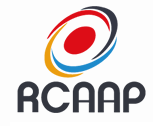Additive and non-additive genetic effects, genetic group and breeding system on carcass metric characteristics of steers originated from Charolais x Nellore rotational crossbreeding
DOI:
https://doi.org/10.5433/1679-0359.2014v35n6p3319Keywords:
Bos indicus, Bos Taurus, Crossbreeding systems, Model comparisons, Multiple regression, Production of young steer.Abstract
Carcass, leg and arm lengths of 876 steers originated from rotational crossbreeding between Charolais (C) and Nellore (N) breeds were evaluated. Two models were used in the analyses. In Model I, genetic effects were represented by breeding system - SA and genetic group nested within SA - GG(SA), being: C and N (straightbreds), 1/2C1/2N and 1/2N1/2C(G1), 3/4C1/4N and 3/4N1/4C(G2), 5/8C3/8N and 5/8N3/8C(G3) and 11/16C5/16N and 11/16N5/16C(G4). Model II corresponded to Model I, however, SA and GG(SA) were substituted by the covariables corresponding to the percentage of C breed of the steer (individual) and its mother (maternal) (additive genetic effect of C breed in relation to N), and the percentage of heterozygosis of the individual and its mother (non-additive genetic effect due to dominance). From the evaluated metric carcasses characteristics, carcass length was the most influenced by additive due to breed and heterotic genetic effects, being the individual component of more importance than maternal. C steers showed higher carcass length and lower leg and arm lengths than N. Heterosis was positive and when expressed in percentage, the values were similar for all metric carcasses characteristics. The possible non-additive genetic effects, represented by epistasis and linkage influenced the characteristics. The models were similar with respect to capacity of prediction of characteristics. The crossbreeding system used took advantage of heterosis and breed complementarity, on the carcass metric characteristics of steers submitted to production system with purpose of slaughter at two years of age.
Downloads
Downloads
Published
How to Cite
Issue
Section
License
Copyright (c) 2014 Semina: Ciências Agrárias

This work is licensed under a Creative Commons Attribution-NonCommercial 4.0 International License.
Semina: Ciências Agrárias adopts the CC-BY-NC license for its publications, the copyright being held by the author, in cases of republication we recommend that authors indicate first publication in this journal.
This license allows you to copy and redistribute the material in any medium or format, remix, transform and develop the material, as long as it is not for commercial purposes. And due credit must be given to the creator.
The opinions expressed by the authors of the articles are their sole responsibility.
The magazine reserves the right to make normative, orthographic and grammatical changes to the originals in order to maintain the cultured standard of the language and the credibility of the vehicle. However, it will respect the writing style of the authors. Changes, corrections or suggestions of a conceptual nature will be sent to the authors when necessary.


















